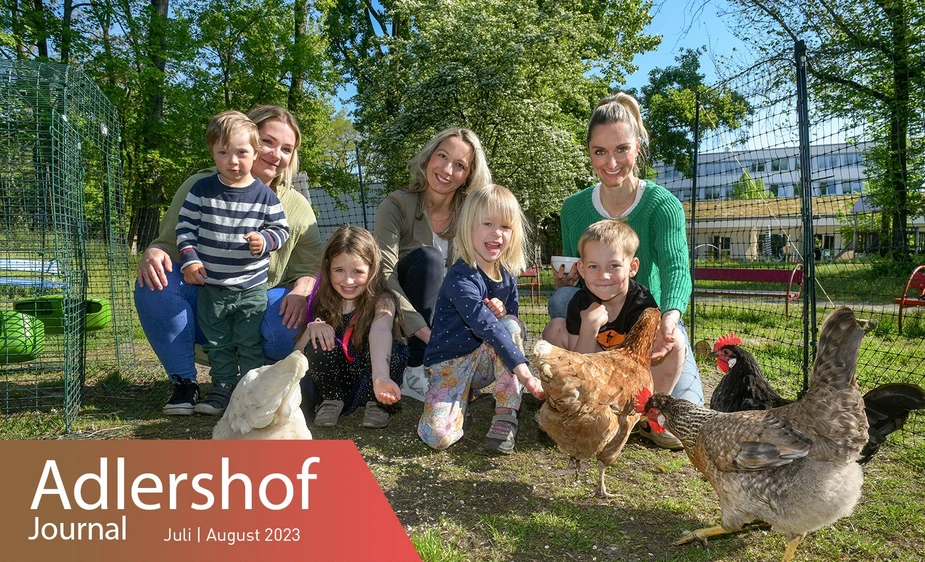Winged visitors
A project involving chickens is winning over children, parents and teachers at the “Am Studio” nursery
“The group consists of four chickens, the head of which is called ICE-Fressnapf,” says Ulrike Becker, who runs the nursery. Always the first to run to the food, the top chicken was collectively and democratically named after the German high-speed train and the word for animal feeding bowl. Another was named “Hätti-Hühnchen” and then the children had two more chicken flatmates that lived in a fenced area of the extensive nursery premises for four whole weeks. Their henhouse was fully automatic, opening the door in the morning and closing it at night.
Janina Alte, one of the nursery workers, was the one to suggest working with animals, in this case, chickens, because of their positive effect on children, and was met with open ears by nursery manager Becker and her colleague Sandra Kopietz. The nursery has been addressing environmental and animal welfare issues for over ten years, including projects like “How does plastic impact the oceans?”, “How can we avoid and recycle waste?” and “How do we eat healthily?”. The results were equally numerous with a so-called Naschgarten (snack garden), where children grow fruit and vegetables, receiving an award as a “Waldkönner-Kita” for forest school projects, a cooperation with Berlin’s municipal waste company BSR for collecting rubbish, and a sponsorship for a seal. Becker and her team see it as their duty to raise awareness for a more sustainable lifestyle among the currently 105 children at the nursery and their parents.
The staff quickly contacted Johannes Weiß, the man they call “Hühnerhannes” or “John the Chicken Guy”, who rents chickens to nurseries, schools, and even retirement homes and takes care of supervision and accommodation. The sensitive prey animals are particularly suitable for use in pedagogy. Chickens show very clearly whether they feel comfortable in an environment and how much contact with people is pleasant for them. They are also interesting animals to observe due to their diverse sounds, their scratching, pecking, and flapping. The project was disclosed to the parents, funding was secured, and the nursery staff found a way to share the responsibility for watching the chickens on weekends. After all this was done, the nursery workers were ready to announce the “huge surprise” to the children in mid-April.
“The moment when the chickens moved in was exciting for all of us,” says Becker, “and the children’s reaction really impressed us.” For a long time, they simply observed the animals. They were included in caring for and feeding the animals right off the bat. “The children learned what kind of environment chickens need to be happy,” explains Becker. Those who were particularly daring could feed the animals from their hands and even pet “ICE-Fressnapf”, who already had some prior experience with children. “This vote of confidence will become a core memory and will teach them how to behave mindfully and considerately.” The children were also invariably confronted with the cycle of life. Despite all precautions, they had to be prepared that predatory animals like foxes might meet the chickens with less peaceful intentions. Luckily, the young animal carers did not have to make that experience. The hens give four eggs every day to the nursery community. “This, too, was a topic we addressed in the course of this project. Where does our food actually come from?” says childminder Kopietz. Increasingly, the children were questioning their own meat consumption.
Within a few days, comfortable seating was added to the nursery’s chicken yard at a respectful distance and this quickly became a “chill-out zone”, which the children used independently to cool down more effectively from stress or conflict situations. “Such a successful project on so many levels” is the overall conclusion of the nursery staff and everybody can absolutely imagine receiving the winged visitors again soon.
Peggy Mory, Adlershof Journal
